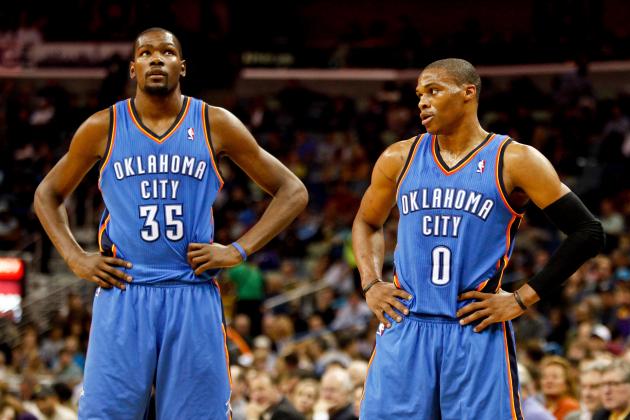Research conducted in the field of artificial intelligence, cognitive science, neuroscience, developmental and behavioral psychology, behavioral ecology, and even statistics suggests that the way creatures learn and think is simple: This is similar to that. This is almost that. This is sufficient for that. And while the methods of analogy and approximation may seem primordial, they are also often highly efficient and even effective.
This is the fourth installment of The Labyrinthian, a series dedicated to exploring random fields of knowledge in order to give you unordinary theoretical, philosophical, strategic, and/or often rambling guidance on daily fantasy sports. Consult the introductory piece to the series for further explanation on what you are reading. Just think of this as the DFS version of The Neverending Story.
The Utility of Simplicity
In his conclusion to The Signal and the Noise, Nate Silver writes the following about the straightforward manner in which we create and interpret significance:
Our brains process information by means of approximation. This is less an existential fact than a biological necessity: we perceive far more inputs than we can consciously consider, and we handle this problem by breaking them down into regularities and patterns. . . . With experience, the simplifications and approximations will be a useful guide and will constitute our working knowledge.
As humans, we are simple creatures — but it’s our very simplicity that has facilitated some of the most important discoveries and advancements in our history. Gravity was theorized because of a simple observation. The binary code is based on the varied use of two single numbers. And polymerase chain reaction — the most important genetic mapping procedure created — is nothing more than a short series of easy steps that someone won a Nobel Prize for merely because he put those steps together and in the right order.
Essentially, simplification can be a means to evolution.
Transitioning from NFL to NBA
The transition from NFL DFS to NBA DFS isn’t easy, but I believe that we can make it easier through the process of simplification. To be clear, one size doesn’t fit all in NBA model building, but the best NBA Player Models offered on the site — the Phan Model and the Bales Model — both rely most heavily on Projected Plus/Minus and Projected Points per Thousand Dollars, and this fact is informative.
Projected Plus/Minus is a metric exclusive to Fantasy Labs, while Projected Points per Thousand Dollars is a standard industry metric. Both metrics are fairly straightforward (although Plus/Minus is elegant in its simplicity), and both in their own way take into account the twinned concerns of production and value. Also, both rely on our industry-leading projections, which is perhaps where their true virtues lie.
If one were transitioning into NBA DFS and wanted to build a simple model as a way of learning about how our ratings and metrics all work together (while still having a chance of being competitive in contests), I think that it would make sense to use Projected Plus/Minus as the skeleton of the model — especially since Plus/Minus is the backbone of most of our analysis — and then to use Projected Points per Thousand Dollars as the model’s epidermis, as it were.
In fact, that’s essentially what I did when I built my model.
Introducing The Simpleton’s NBA Cash Game Model
That’s right! I built a model — because experimenting for yourself in the awesome laboratory of fantasy is the best (and maybe only) way for you to learn how to create successful models and winning lineups. I’m thinking of this as a cash game model, but I believe that with the appropriate tweaks it could have application to tournaments as well.
In creating this Simpleton’s Model, I experimented on the proportion between Projected Plus/Minus and Projected Points per Thousand Dollars, and I settled ultimately on something very close to a 3:1 ratio. In fact, I discovered that if one used only those two ratings in a maximized 3:1 ratio, then one would have a model that at least looks pretty good:

That’s pretty good for only two inputs proportioned in maybe the most basic ratio of all time — but I’m an NBA simpleton, not a moron! Obviously we need more than just two inputs . . . and I want a model that’s even better.
Deciding on the third factor for what would be the final version of my model was easy: Bargain Rating, which is a Fantasy Labs metric that essentially tells you the extent to which a player is discounted on one DFS platform relative to another platform. On its own, a high Bargain Rating correlates with an improved Plus/Minus — see for yourself in our Trends section — and it has the added benefit of indicating to you that a player should probably be used on one site instead of another.
So to the Simpleton’s Model — a skeletal system covered in skin — I added a modicum of Bargain Rating hair. And, just like that, I became the Frankenstein to the Model’s Monster:

George Costanza was an idiot — but (per Curb Your Enthusiasm) even idiots can have brilliant ideas: He invented the iToilet phone app.
Here are the proportions I used in the final version of the Simpleton’s Model:

Even though I think that the best way to use our models is to alter them and make them your own — or at least to make adjustments to the optimized lineups they produce, the following question is still very pertinent: Can the Simpleton’s Model produce a usable DFS lineup?
You tell me. Here’s the optimized DraftKings lineup the Simpleton’s Model produced at 11:06 AM ET on the day of publication:

And here’s the DraftKings lineup produced by the Phan Model at 11:07 AM ET on the same day:

Are We Walking Around in Circles?
Through approximations we can make advancements. Something akin to a successful model can be constructed with a merely a few factors. I don’t think that the ease with which the Simpleton’s Model was created should be counted as a strike against it, and the same can be said for its simplicity. Rather, I think that the model should serve as a reminder that (not only are our tools awesome but also) what is basic can often be brilliant. The menial can contain magnificence.
By playing with our models, one learns. For instance, in experimenting with the creation of various models that will never see the light of day, I began to see how different ratings correlated and diverged. In my mind, the point of building the Simpleton’s Model is not to use the model. The point was to learn how the models work, to gain an understanding of what an even better model might look like, and, yes, to make a point about the sophistication of simplicity.
Our metrics, such as Plus/Minus and Bargain Rating, are similar to labyrinths. They may seem complex, but they always inherently lead you in the right direction — just like our models.
You don’t need to be a DFS genius to be good at DFS. That’s what we at Fantasy Labs are for — well, most of us. Being a simpleton is fine.
———
The Labyrinthian: 2016, 4





